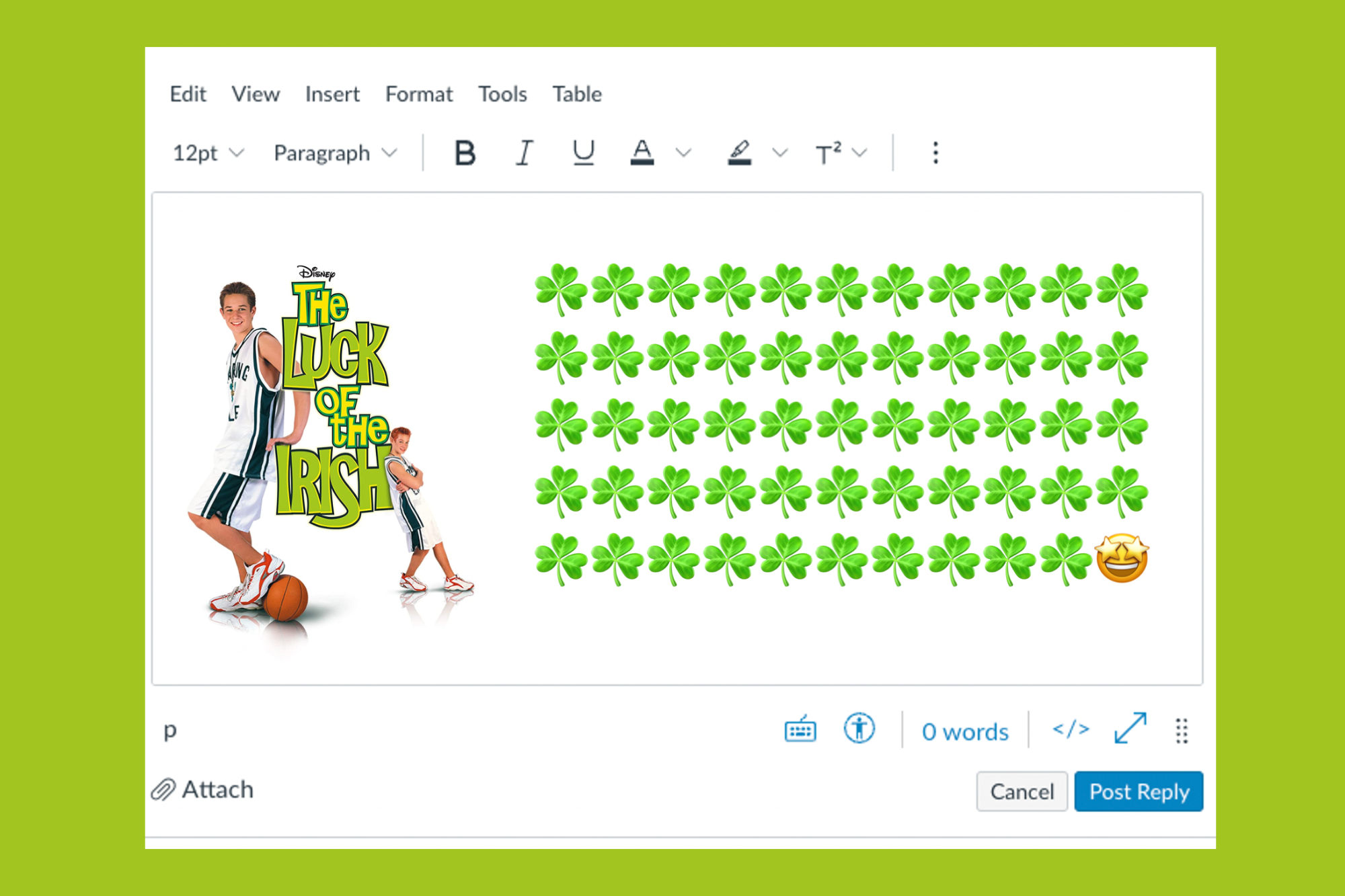Dear reader, as you may have gathered from the current hue of the Chicago River, St. Patrick’s Day is upon us.
For those of you who didn’t already spurn the cold and don your neon green at the parade in Newport this past Saturday, NEVER FEAR; there are still plenty of ways to celebrate this most special of days. You could, for example, support efforts to highlight the beauty of the Irish language or consider how arguments for Irish sovereignty have changed over history or listen to that one song from the Legally Blonde musical.
OR! If none of those float your boat, you COULD instead watch one of the most culturally relevant films currently available on Disney+, the 2001 Disney Channel Original masterpiece The Luck of the Irish, as students in one Modern Culture & Media seminar here at Brown most definitely totally recently did.
The Rib, intrepid investigators that we are, acquired a copy of the students’ Canvas discussion posts. Our findings are as follows:
One student, new to the concentration, posted more of a summary than an analysis of the film, which was helpful for the clarity of this article but unfortunate for the sake of their grade. “I thought it was really interesting and powerful, but also maybe ambiguous, how, in the movie, Kyle discovers he might be Irish only when he spontaneously starts step dancing after school one day. He’s 15 years old at this point. Had he never felt this mysterious compulsion before?”
They went on: “In addition, it is thus really thought-provoking and notable how, to turn himself back into a human after transforming into a leprechaun, he at first thinks he has to defeat the evil potato chip factory owner who is also his grandfather because he thinks the grandfather stole the family’s magical gold coin which Kyle never knew was magical in the first place!”
[Rib note: this is truly the plot of the film we’re not lying.]
The student seemed to grow confused and lapsed into musing by the end of their post: “But then none of that is true and instead Kyle has to challenge a totally different but still evil leprechaun to basketball, which could, in one interpretation, reflect the fallacy of life. And of…memory?”
Next, a senior concentrator, taking a break from crafting their lengthy thesis on the cinema of avant-garde skincare advertisements, weighed in: “My question for the class is how does this film, particularly with its inclusion of both ‘This Land is Your Land’ and presumably free license stock music on its soundtrack, blend postmodernist techniques of pastiche as a commentary on nationalism in our hypermediated age?”
In a separate post, a go-getter first year offered a purely Marxist interpretation of the film. “Society, of course, renders the television movie product a commodity in its marketing to and capitalization upon the vulnerable eyes of its intended audience. Yet, I am more interested in how the process of leprechaun-ization renders Kyle himself a commodity in that the camera – as symbolized in the character of Bonnie – values him far more when his ears are pointy. How can we think about these complexities in light of our reading last week of Marx’s ‘The Fetishism of The Commodity And Its Secret’? Well, I think that–”
[We’ve cut off the rest of the post for length purposes. It launches into a deep dive of the film’s treatment of “temporal periods” which are certainly not the same thing as “time.” You get the gist.]
The final discussion post, for this was a conveniently small seminar, invoked the film’s internal mythology. “The tagline of this movie is ‘Kid today, leprechaun tomorrow’ which suggests to me it is primarily a coming of age story. But as the evil leprechaun Seamus McTieran states in the film, ‘Don’t rush to grow up, kid…you gotta wait to find your pot of gold.’”*
We will leave you with that. Happy St. Patty’s day, all <3
[*That line is not actually in the film Disney pls don’t sue us]
